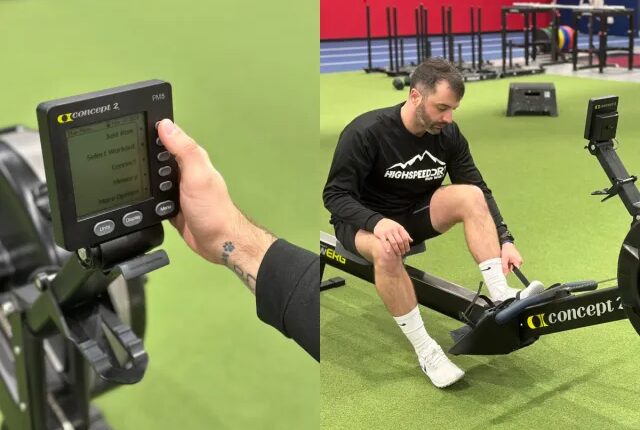For years, I relied on traditional methods of cardio such as running and cycling to maintain my endurance and keep my heart in good shape. Though I was no stranger to using the rowing machine, I decided to shift my focus to it because of its unique benefits. The rower offers a comprehensive workout that enhances both strength and cardiovascular fitness, which intrigued me. This decision to switch up my usual cardio routine proved to be a game-changer in improving my fitness level and altering my view on cardiovascular workouts.
Within a few weeks of prioritizing rowing, I noticed significant improvements in various aspects of my fitness, including stamina, physical composition, and muscle strength. Unlike my previous cardio exercises, rowing not only challenged my cardiovascular endurance but also targeted muscle groups that were often overlooked in my routine, such as my back, shoulders, core, and legs.
Here’s what made rowing a game-changer, the workouts I relied on, and how this cardio staple revitalized my fitness journey.
Table of Contents
Why I Made the Switch to the Rower for Cardio
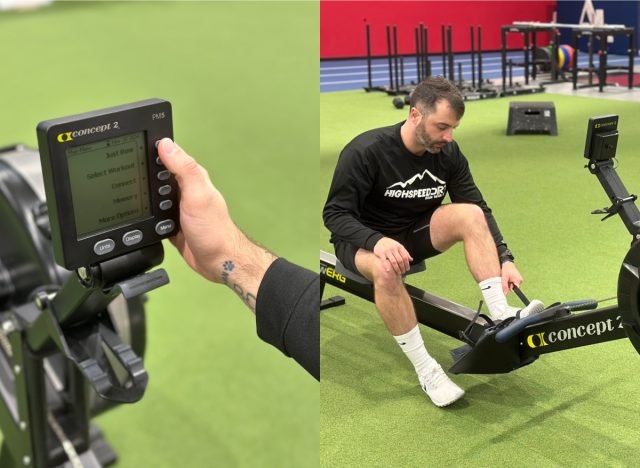
Initially, my interest in rowing was piqued by curiosity and a desire to break away from the monotony of my usual cardio exercises. While running and cycling were effective, they had become repetitive, focusing on the same areas and movements repeatedly, thereby missing out on the potential for overall fitness enhancement.
Rowing stood out when I started looking into alternatives for a few reasons. It’s one of the rare cardio workouts that can simultaneously develop cardiovascular fitness and muscular endurance, demanding power from nearly every muscle in the body with each stroke. Plus, the rower is low-impact, meaning my joints would get a much-needed break from the wear and tear of running.
Beyond that, rowing offers an anaerobic boost that other cardio forms don’t always provide. With the rower, I could dial up intensity for short, intense bursts that pushed my anaerobic threshold or sustain a steady-state pace for a traditional cardio workout. Essentially, I’d found a way to tackle endurance, strength, and high-intensity intervals all in one machine.
How Rowing Transformed My Cardio Routine
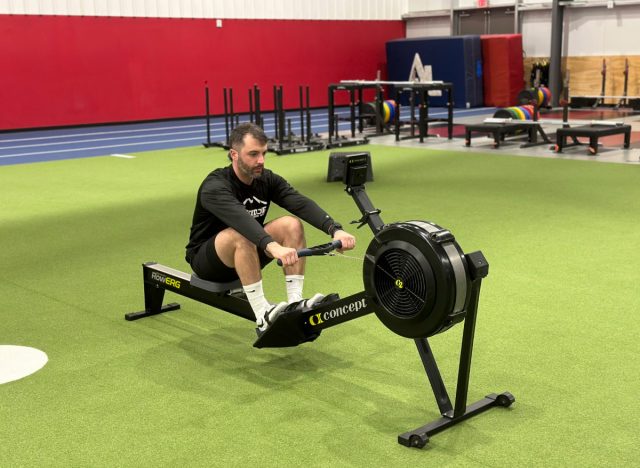
Rowing quickly replaced my old cardio routine because it challenged me in ways other forms couldn’t. I first noticed how intensely it worked my core and back. Each stroke engaged my lats, rhomboids, and lower back in a way that traditional cardio couldn’t match. I also felt my legs burning from the repetitive power and drive required, which was a pleasant surprise.
My stamina started improving as well. The rower demands a consistent rhythm and focus, which improved my mental endurance and pacing. Over time, my ability to hold higher stroke rates improved, and I noticed I could push harder for longer.
Rowing also made me stronger; my grip, shoulders, and posterior chain developed noticeable strength gains that began to show up in my other workouts. Ultimately, rowing wasn’t just about replacing cardio but enhancing my entire fitness foundation.
The Rowing Workouts I Tried to Transform My Cardio
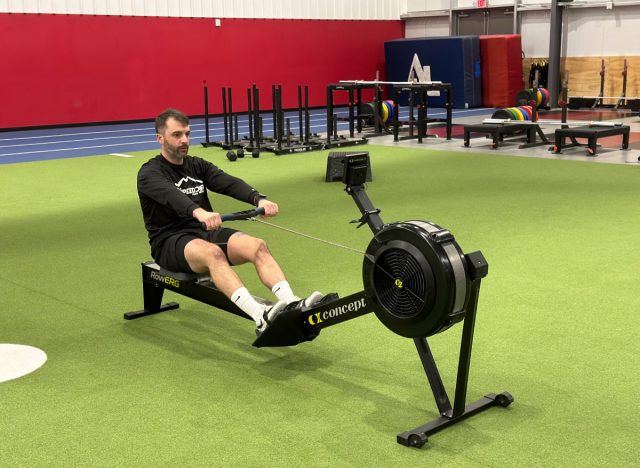
Here’s a snapshot of my training week. While these rowing workouts centered around building muscular endurance and stamina, they also complemented my three-day strength program.
My top tip? Tailor your routine to suit your unique goals and schedule! If you have three to four weekly workout days, prioritize sessions that align with your primary objective. For example, if strength is your main focus with a touch of cardio, aim for two to three strength workouts paired with one to two rowing sessions. If cardio takes priority, flip the balance with two or three rowing workouts and one or two strength days.
Weekly Schedule
- Monday: Full-body Strength
- Tuesday: Rower Workout
- Wednesday: Full-body Strength
- Thursday: Rower Workout
- Friday: Full-body Strength
- Saturday: Rower Workout
- Sunday: Rest, Recover, Relax
Sprint Intervals for Anaerobic Power
What you need: A rowing machine and a timer. This quick, high-intensity workout will take about 25–30 minutes. It pushes your anaerobic capacity with short, explosive sprints followed by recovery intervals.
The Routine:
- Warm-up (5 minutes of easy rowing)
- Sprint Interval (10 x 30 seconds max effort, 90 seconds rest between sprints)
- Cool-down (5 minutes of easy rowing)
Directions: This workout is all about explosive power and recovery. You’ll perform a warm-up, then go into 10 high-intensity sprints of 30 seconds each, followed by a 90-second active recovery. Finish with a cool-down to reset your heart rate and prevent muscle stiffness.
How to Do It:
- Warm-up
- Row at an easy pace for 5 minutes at 18–20 strokes per minute (SPM) to get your body warm and your muscles prepared.
- Sprint Interval
- Row for 30 seconds at maximum intensity, aiming for a 26–30 SPM stroke rate.
- Follow each sprint with 90 seconds of active rest, rowing lightly at around 18 SPM.
- Repeat for a total of 10 rounds.
- Cool-down
- Row at a relaxed, easy pace for 5 minutes to calm your heart rate.
Pyramid Endurance Intervals
What you need: A rowing machine and a timer. This endurance-focused workout will take about 30–35 minutes and uses a pyramid interval structure to build aerobic capacity and muscular endurance.
The Routine:
- Warm-up (5 minutes of moderate rowing)
- Pyramid Intervals:
- 1 minute high, 1 minute easy
- 2 minutes high, 2 minutes easy
- 3 minutes high, 3 minutes easy
- 4 minutes high, 4 minutes easy
- 3 minutes high, 3 minutes easy
- 2 minutes high, 2 minutes easy
- 1 minute high, 1 minute easy
- Cool-down (5 minutes of easy rowing)
Directions: In this workout, you’ll increase and decrease your interval duration, challenging your stamina and pacing ability. During the “high” intervals, row at a challenging pace, aiming for a 24–26 SPM stroke rate. In the “easy” intervals, slow down to 18–20 SPM to recover.
How to Do It:
- Warm-up
- Row at a moderate pace for 5 minutes at 20–22 SPM.
- Pyramid Intervals
- Row for 1 minute at a high intensity (24–26 SPM), followed by 1 minute at an easy pace (18–20 SPM).
- Row for 2 minutes high, followed by 2 minutes easy.
- Row for 3 minutes high, followed by 3 minutes easy.
- Row for 4 minutes high, followed by 4 minutes easy.
- Then repeat in reverse order: 3 minutes high, 3 minutes easy; 2 minutes high, 2 minutes easy; 1 minute high, 1 minute easy.
- Cool-down
- Finish with 5 minutes of easy rowing at a relaxed pace, focusing on smooth strokes and breathing.
Steady-State Distance Row
What you need: A rowing machine and a timer or display to track distance. This steady-state workout will take around 20–25 minutes and is perfect for building cardiovascular endurance and refining rowing form.
The Routine:
- Warm-up (5 minutes at an easy pace)
- Main Set (Row 5,000 meters at a moderate pace)
- Cool-down (5 minutes of easy rowing)
Directions: This workout is about consistency and technique. You’ll row steadily for 5,000 meters, focusing on form, breathing, and maintaining a sustainable rhythm. During the longer rowing duration, dial in your technique.
How to Do It:
- Warm-up
- Row at an easy pace for 5 minutes, maintaining a stroke rate of 18–20 SPM to loosen up your muscles.
- Main Set
- Row for 5,000 meters at a steady, moderate pace (20–22 SPM). Concentrate on solid, consistent strokes that engage your legs, core, and upper body. Keep your breathing even and rhythmic.
- Cool-down
- Finish with 5 minutes of relaxed rowing, allowing your heart rate to decrease while gradually maintaining smooth, controlled strokes.
Tips for Making Rowing a Habit and Getting the Best Results
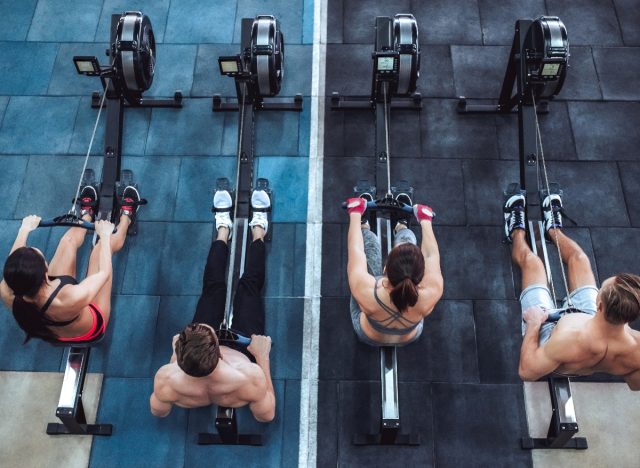
1. Prioritize Technique
Rowing can be demanding on the back and shoulders, so focusing on form is essential. Begin each stroke by driving through your legs, then lean back slightly, and finally, pull with your arms. Reverse the sequence on the way back. Practicing good technique prevents injuries and maximizes your power output with each stroke.
2. Track Your Progress
Record your distances, times, and stroke rates. This allows you to measure improvements and set realistic goals, like shaving time off a 2,000-meter row or increasing your sprint interval pace. Tracking helps you stay motivated and builds accountability in your new routine.
3. Mix Up the Workouts
Rowing offers a lot of variety, so don’t fall into a pattern of only steady-state or only sprints. Combining different workout types challenges your body in new ways, keeping your muscles guessing and preventing plateaus. Aim for a mix of short, high-intensity rows, medium-paced intervals, and long, steady rows each week.
4. Incorporate Rowing as a Finisher
If you’re lifting or doing other forms of cardio, add a short rowing finisher at the end of your workout. A quick 500-meter row or a 2-minute sprint can elevate your heart rate, improve conditioning, and bring a fresh mental edge to your routine without needing an entire rowing session.
5. Focus on Consistency Over Perfection
The key to seeing results with rowing (or any new workout) is to stick with it consistently. Even if some days aren’t perfect, showing up regularly will build your stamina and confidence on the rower—consistency compounds over time, leading to the most noticeable changes in your fitness.
Frequently Asked Questions (FAQs)
Why did you switch to rowing for cardio?
Rowing is a full-body workout that engages multiple muscle groups simultaneously. It is a low-impact exercise that reduces the risk of injury while providing a high-intensity cardio workout. Rowing also helps improve cardiovascular fitness and strengthens both the upper and lower body.
How has rowing transformed your body?
Rowing has helped me build muscle strength and endurance while shedding excess body fat. It has toned my arms, legs, and core muscles. Additionally, rowing has improved my overall fitness level and stamina, allowing me to perform better in other physical activities.
How often do you row for cardio?
I aim to row for at least 30 minutes to an hour, 3 to 5 times per week. Consistency is key to seeing results from rowing both in terms of improving cardiovascular health and physical appearance.
Do I need any prior experience to start rowing for cardio?
No prior experience is necessary to start rowing for cardio. Rowing machines are user-friendly and suitable for beginners. It’s essential to start with proper form and gradually increase intensity over time. Many gyms also offer introductory classes to help beginners get started with rowing.

